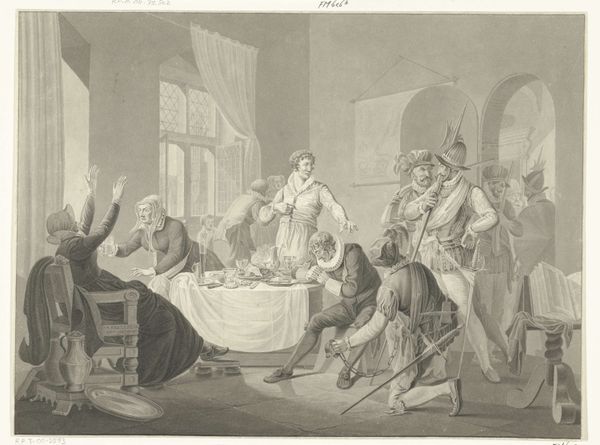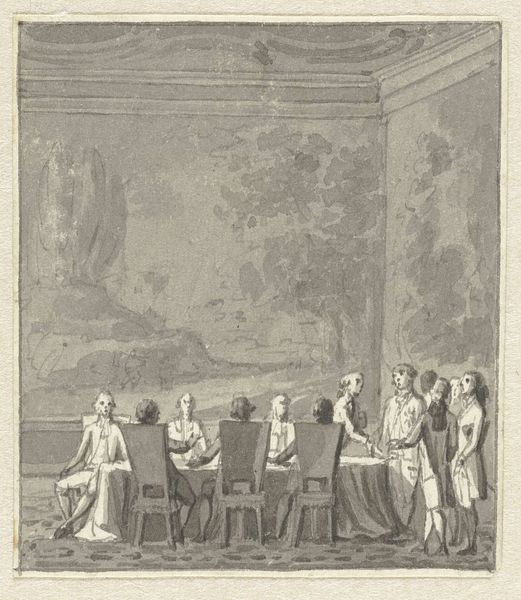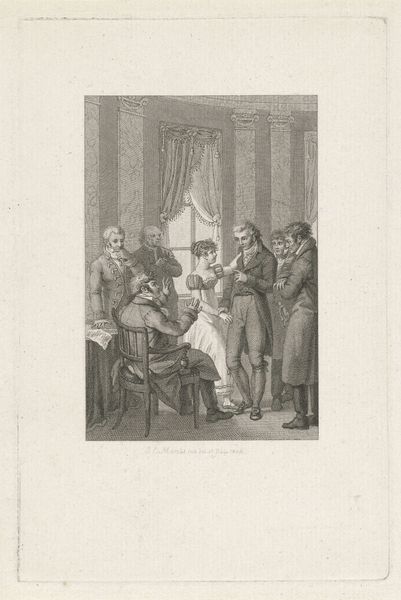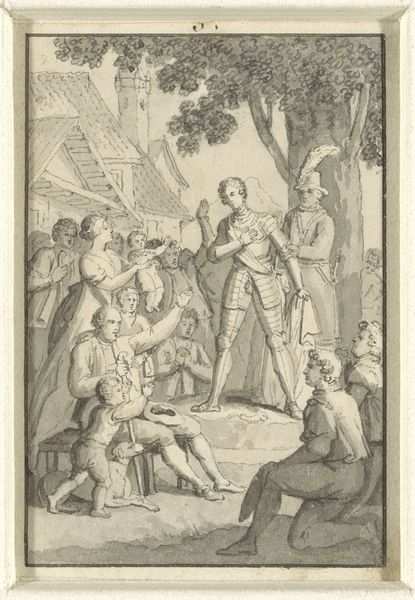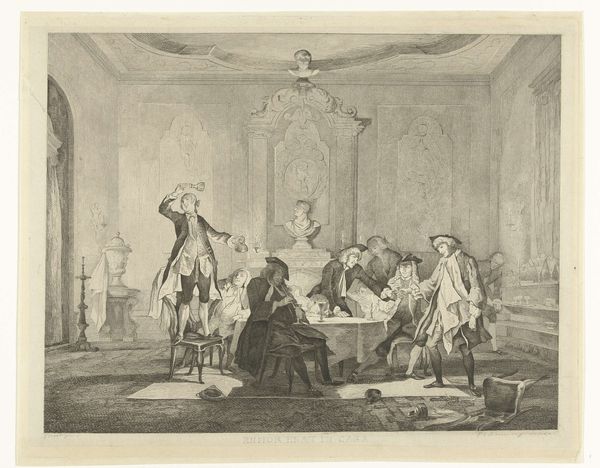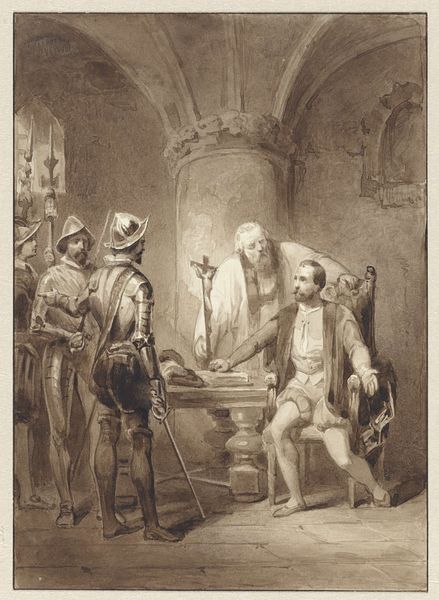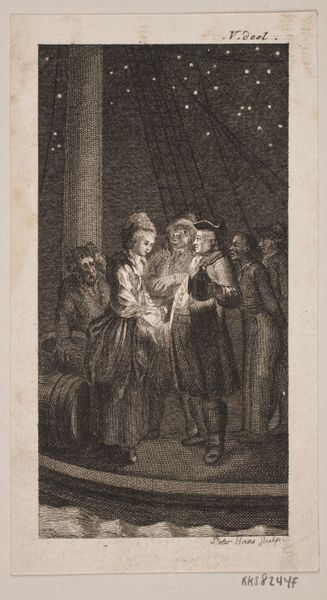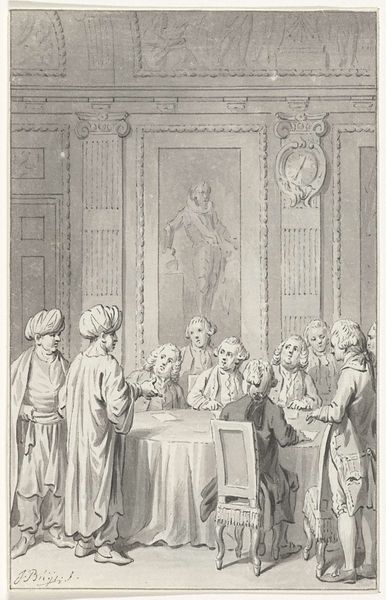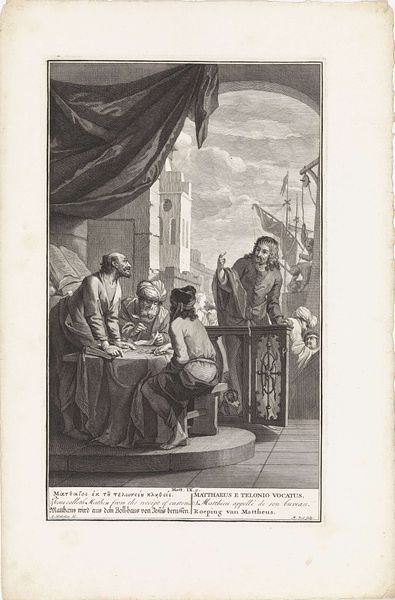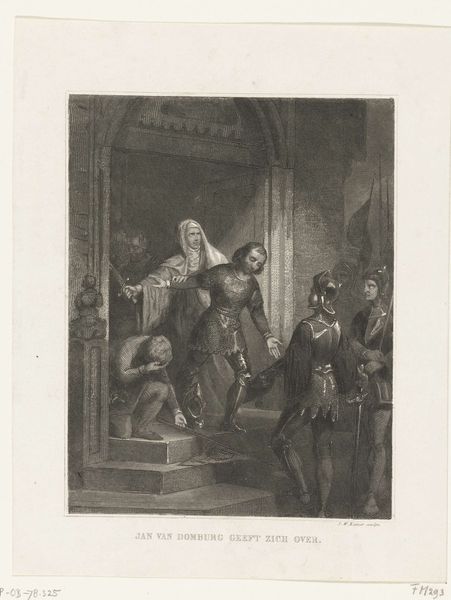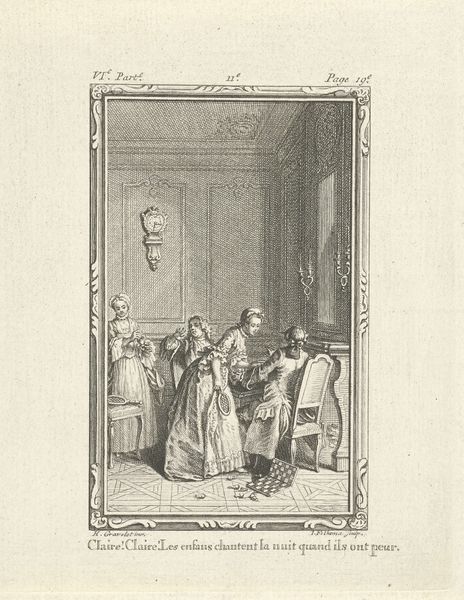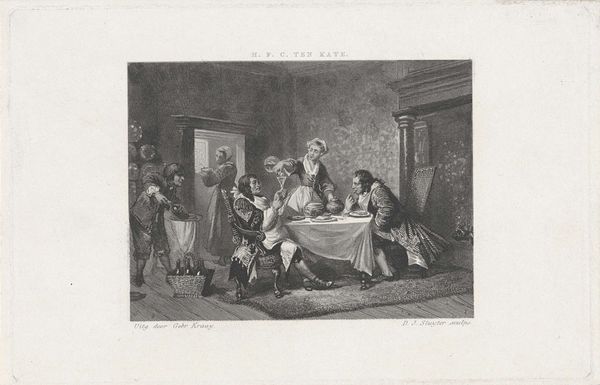
drawing, print, gouache, paper, ink, pencil, chalk, pen
#
portrait
#
drawing
#
narrative-art
# print
#
gouache
#
pencil sketch
#
charcoal drawing
#
paper
#
ink
#
pencil drawing
#
pencil
#
chalk
#
pen
#
genre-painting
#
charcoal
#
watercolor
Dimensions: 113 × 88 mm
Copyright: Public Domain
Editor: Here we have "Sleeping Congregation," an early 19th-century drawing by John Thurston, rendered with a mixture of chalk, pen, ink, pencil, and gouache on paper. It certainly lives up to its name, depicting figures dozing off, seemingly during some lecture or service. What can you tell us about it? Curator: Looking at "Sleeping Congregation," I'm immediately drawn to Thurston's process. Notice how he combines seemingly disparate materials: chalk, ink, gouache. This suggests a layered approach, building the image through various stages of production. The combination of such readily available, perhaps even quotidian, materials blurs the lines between "high" art and the materials of everyday life. Consider what that tells us about the availability of artistic materials for artists, and Thurston's labor in creating this drawing. What do you make of the contrast between the figures' apparent boredom and the labor involved in producing the image? Editor: That's a fascinating way to frame it! It highlights the inherent tension: the subjects are disengaged, while the artist clearly invested considerable time and effort. The materials being rather modest perhaps also implies it was created outside traditional academy contexts? Curator: Precisely! Think about the context – 18th and 19th-century England, burgeoning industrialization. Thurston’s choice of medium could be read as a comment on accessible art forms for the masses. Consider this scene alongside the larger economic system where literacy and education was becoming increasingly available as cultural capital. Are these people resisting education or something else? Editor: It reframes how I look at it. The focus on materials and process really grounds the piece in its social and historical context, pointing towards broader issues of labor, class, and accessibility to resources and education. Curator: Indeed. Seeing art as the result of material choices and social conditions allows for a more grounded, relevant, and challenging interpretation. Editor: Absolutely, thank you for shedding light on the social commentary embedded in Thurston's "Sleeping Congregation"!
Comments
No comments
Be the first to comment and join the conversation on the ultimate creative platform.
